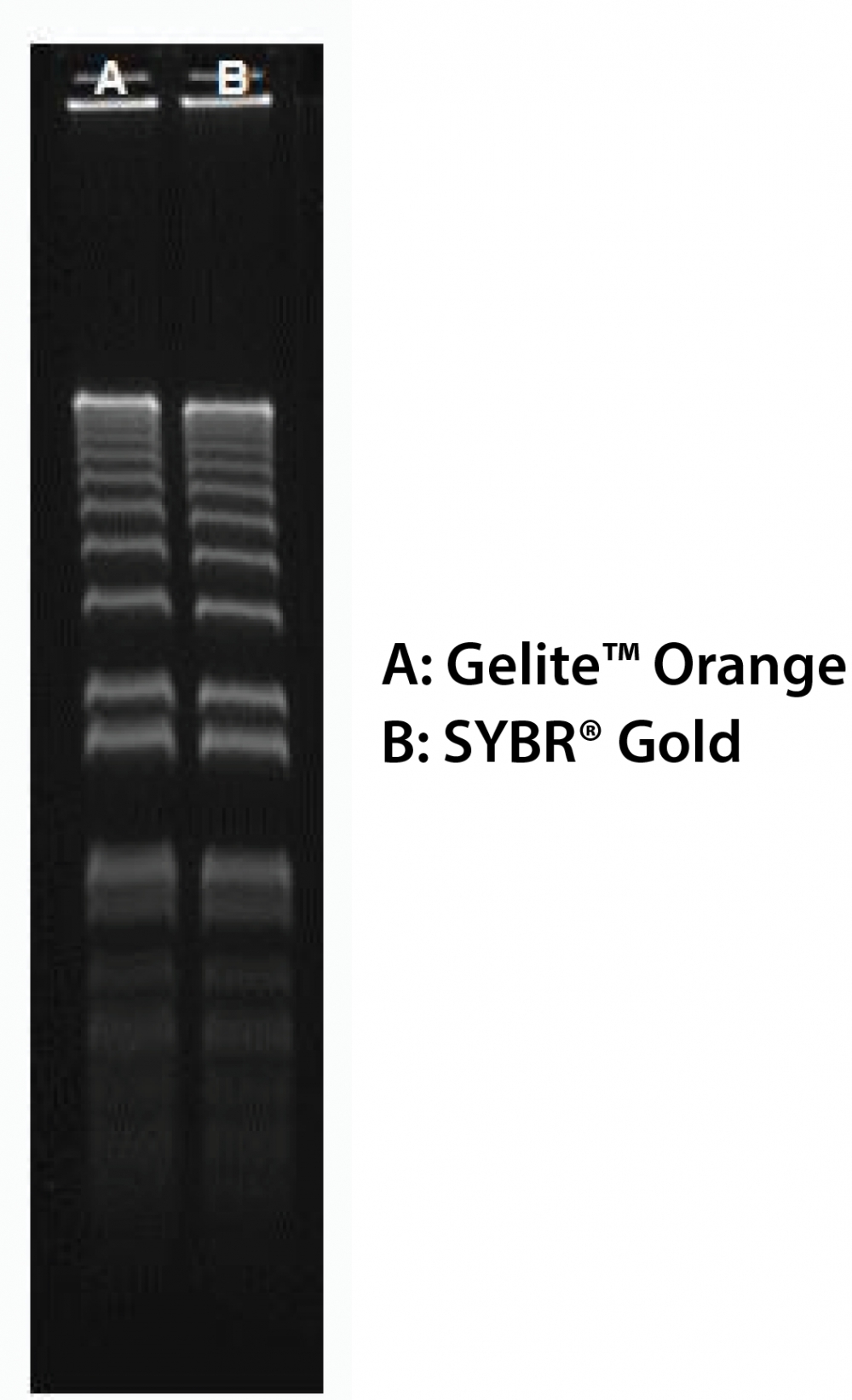Gelite™ Orange Nucleic Acid Gel Staining Kit
Gelite™ Orange is an extremely sensitive nucleic acid gel stain for detecting DNA or RNA in gels using a standard 300 nm UV transilluminator and Polaroid 667 black-and-white print film. As with Helixyte™ Green stain, this remarkable sensitivity can be attributed to a combination of unique dye characteristics. Because the nucleic acid-bound Gelite™ Orange dye exhibits excitation maxima at both ~495 nm and ~300 nm (the emission maximum is ~537 nm), it is compatible with a wide variety of instrumentation, ranging from UV epi- and transilluminators and blue-light transilluminators, to mercury-arc lamp- and argon-ion laser-based gel scanners. Our Gelite™ Orange Nucleic Acid Gel Staining Gel Kit includes our Gelite™ Orange nucleic acid stain with an optimized and robust protocol. It provides a convenient solution for staining nucleic acid samples in gels.


| Catalog | Size | Price | Quantity |
|---|---|---|---|
| 17594 | 1 Kit | Price |
Storage, safety and handling
| H-phrase | H303, H313, H340 |
| Hazard symbol | T |
| Intended use | Research Use Only (RUO) |
| R-phrase | R20, R21, R68 |
| UNSPSC | 41116134 |
Instrument settings
| Transilluminator | |
| Excitation | 254 nm or 300 nm |
| Emission | Long path green filter (ex. SYBR or GelStar) |
Contact us
| Telephone | |
| Fax | |
| sales@aatbio.com | |
| International | See distributors |
| Bulk request | Inquire |
| Custom size | Inquire |
| Technical Support | Contact us |
| Request quotation | Request |
| Purchase order | Send to sales@aatbio.com |
| Shipping | Standard overnight for United States, inquire for international |
Page updated on January 16, 2026
